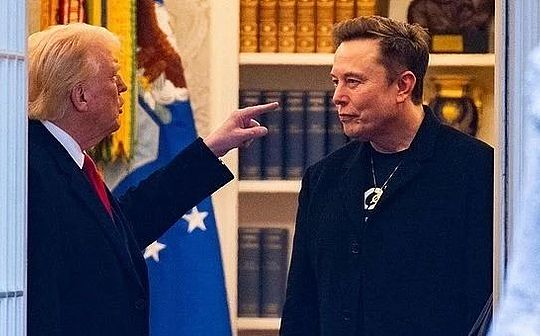Strategic ETH reserves: Ethereum’s new narrative battle

Reprinted from jinse
06/06/2025·14DAuthor: SuperEx ; Source: Plain Language Blockchain
You may have heard of the concept of "Bitcoin Strategic Reserves" - perhaps from Michael Saylor and his company MicroStrategy, which converts nearly all of the cash into BTC. Now, Ethereum is beginning to embark on a similar path, and a new narrative is accelerating its formation: "Strategic ETH Reserve" (SER). This is not just imitation, but opens up its own unique path.
When the term "strategic ETH reserve" first appeared, many people thought it was just another gimmick on crypto Twitter. After all, the boundaries between Meme and reality are becoming increasingly blurred. But this time, it is evolving from Meme to a movement, from a social media joke to an organized initiative.
So, let’s break it down: What exactly is the strategic ETH reserve? Who is pushing it? How is it different from BTC reserves? Why could this concept become a key driver of Ethereum's future growth?
01. Strategic ETH reserves: the collapse of the new narrative or the old
order?
Strategic ETH reserves are a public initiative that encourage entities – whether they are public companies, DAOs, agreements or media organizations – to intentionally add ETH to their balance sheet as a long-term strategic asset . This is similar to Sailer's approach to using BTC as a corporate cash reserve, but this time, ETH is the protagonist.
This is not just asset allocation, but a public declaration: “ We believe in Ethereum, and we prove our beliefs with actions.”
Take SharpLink (NASDAQ: $SBET) as an example, it is currently leading the trend. The company raised $425 million and plans to convert most of it into ETH, staking, and trade on the Nasdaq. This is almost Ethereum's version of MicroStrategy - run behind the scenes by Joe Lubin and ConsenSys.
Simply put, strategic ETH reserve means an organization openly and intentionally holds ETH for a long time and discloses its quantity, purpose and usage . This sounds simple, but its impact is far beyond "just buying some coins".
We can understand the concept of SER from four strategic dimensions:
-
Align signal beliefs with motivation
Ethereum is not just a technology stack, it is a financial operating system. Holding ETH means participating in the operation of this system. This is not only an endorsement, but also a successful binding of some resources to Ethereum. It is a sincere display and strategic bet. -
Start the enterprise-level "on-chain flywheel"
Similar to MicroStrategy's strategy, companies can raise funds through stock issuance, convert them to ETH and staking them to earn profits. This combination not only enhances resilience in the market cycle, but also creates a new, trust-minimized financial story. -
Broaden ETH's capital market access
Not everyone can or is willing to buy ETH directly, such as institutions, pension funds or strictly regulated sovereign wealth funds. But they can invest indirectly by purchasing stocks of listed companies that openly hold ETH. SER has built a bridge for these inflows of capital, which may unlock a new wave of capital inflows. -
Supply through scarcity compression
Each time the company purchases and pledges ETH as part of the reserve, these ETHs are removed from circulation. Over time, this will further aggravate the supply scarcity of ETH, strengthen its deflationary design, and may accelerate price discovery at key inflection points.
Therefore, SER is not just about "the company buys coins". It is a deeper experiment in trust, financial architecture and asset allocation. Its emergence marks the transition from “technical narrative” to “macro narrative” – a transition that makes ETH an asset that can influence sovereignty and global capital behavior.
02. SharpLink fires the first shot
The most eye-catching SER case at the moment is undoubtedly SharpLink (NASDAQ: $SBET). Originally a small sports bookmaker, the company underwent an amazing transformation at the end of 2024: through non-traditional pathways (non-SPAC or IPO roadshows), it underwent a major asset restructuring that completely shifted its strategic goals toward ETH reserves.
Disclosures show that SharpLink plans to use the $425 million it raised to purchase about 120,000 ETH and staking it as its core source of revenue . More importantly, 90% of control was handed over to a team with deep ties to Ethereum, not Wall Street veterans.
This is not only a capital operation, but a transformation of corporate identity . SharpLink is no longer just a company, but a "publicly listed ETH reserve fund" , freely trading on Nasdaq while deeply embedded in the Ethereum ecosystem . Think of it as Ethereum’s MicroStrategy—but it’s Joe Lubin, not Michael Sealer. The symbolism of this move has sparked real excitement within the Ethereum community - not only a manifestation of belief, but also Ethereum enters the mainstream capital structure in a compliance and institutional form.
03. Why choose SER instead of buying ETH directly?
A reasonable question: Why not buy ETH directly? Why go through these companies?
ETH is undoubtedly a high-quality asset. But if you understand the capital market mechanism, you will find that SER companies provide the potential of "structural alpha" - that is, returns that exceed ETH's own performance.
Suppose you buy stocks like $SBET. Essentially, it is an agent for ETH—its balance sheet holds ETH and earns earnings through pledges, and its share price fluctuates around the value of ETH per share. But if the market is excited about this narrative or pattern, stocks may trade at a premium. For example, a share may represent 1 ETH, but may trade at 1.2 ETH—which allows the company to raise more funds to buy ETH, further driving the flywheel.
This is how the company becomes a "leverage amplifier" for rising ETH prices. Of course, there are risks: poor management, opaque disclosure , etc. But potential benefits include :
-
Leverage effect of ETH exposure: If the stock price rises faster than ETH, investors can obtain amplified returns.
-
More predictable pledge income: ETH pledge returns can be distributed quarterly through dividends or repurchases to enhance shareholder value.
-
Lower barriers to entry and compliance: Institutions do not need wallet or on-chain access, just brokerage accounts.
-
Narrative-driven rise: You are not only investing in ETH, but also riding on the wave of "Ethereum as a national reserve asset."
These companies become amplifiers of ETH prices—the flywheel will continue to rotate as long as the market recognizes this narrative. It's like buying a gold ETF - but this time the "gold bar" is ETH.
04. Summary
SER is a narrative and a turning point
There are many "narratives" in the crypto world - DAO, NFT, GameFi, Meme. Many are too niche or short-lived, and it is difficult to attract the serious attention of traditional capital.
But the SER model is the first time that crypto assets are seen as sovereign reserves —not because of hype, but because of their long-term value, profit predictability, and institutional compatibility .
This is the first step for Ethereum to become a " global settlement asset ". It marks a transition from grassroots experiments to structured financial integration. If Bitcoin is a weapon against the old order, then Ethereum is trying to build a new layer that the old order can be adopted legally and systematically.
This is perhaps what SER really means: it opens the way for crypto assets to be integrated into global asset ledgers—not just celebrated in the echo chamber.

 chaincatcher
chaincatcher

